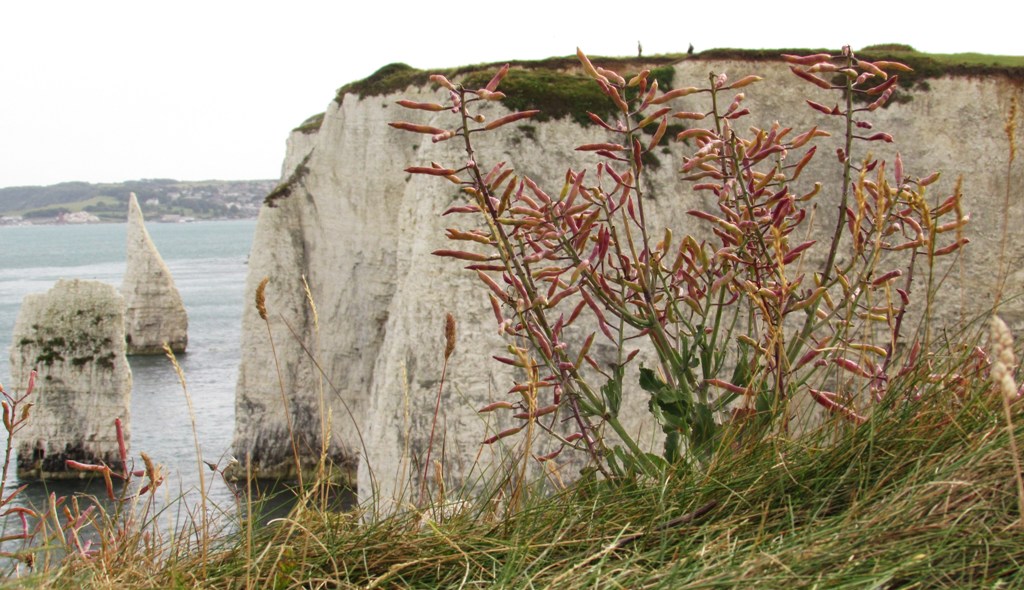
In this post some more useful members of the Brassica or Crucifer family. It covers most of the yellow flowered ones!
In Part 3, I will write about the pink and/or white flowered Crucifers which inhabit these Isles.
And these are the plants I covered earlier in Part 1- just to give a small variety of useful Crucifers!
- Erophila verna or Common Whitlowgrass
- Cardamine pratensis or Cuckoo Flower, Lady’s Smock
- Capsella bursa-pastoris or Shepard’s purse
- Arabidopsis thaliana or Thale Cress
- Cochlearia danica or Danish Scurvygrass
- Alliaria petiolata or Jack-by-the-Hedge , Garlic Mustard and Hedge Garlic
- Cardamine hirsuta or Hairy Bitter-cress
- Rorippa nasturtium-aquaticum or Water-cress
Family 87: the Brassica, Crucifer or Cabbage Family, scientifically known as the Brassicaceae, has approx 52 genera in the British Isles according to Stace! Not all are strictly native but it is an important family for our well known vegetables such as all types of cabbages, radishes, and root vegetables such as Swedes and Turnips!
I use colour coding for easy reading! Blue background is general information about the plant from Online Atlas. Green is about all the uses except for medicinal uses or if there is a warning in which case I use a pink background. This time most pictures are from Wikipedia and illustrations by Köhler–s Medizinal-Pflanzen , Johann Georg Sturm (Painter: Jacob Sturm) – Figures from Deutschlands Flora in Abbildungen at http://www.biolib.de, Public Domain as well as other illustrations as added in links.
Please use the Jump-links in the Contents in order to get easily to the plants described on next page!
Contents:
How to identify the Brassicas/Crucifers and the 7 main groups
Group 1: yellow flowered Crucifers with jointed fruits
Brassica
- Brassica oleracea or Wild Cabbage
- Brassica nigra or Black Mustard
- Brassica rapa or Turnip
- Brassica napus or Rape
- Ethiopian RapeBrassica carinata
- Long-stalked RapeBrassica elongata
- Chinese MustardBrassica juncea
- Pale CabbageBrassica tournefortii
COINCYA
- Coincya monensis ssp. monensis or Isle-of-Man Cabbage
- Coincya wrightii or Lundy Cabbage
SINAPIS
Diplotaxis
Sisymbrium officinale or Hedge Mustard
Hirschfeldia incana or Hoary Mustard
Raphanus
- Raphanus raphanistrum subsp. raphanistrum or Wild Radish
- Raphanus raphanistrum subsp. landra or Mediterranean Radish
- R. raphanistrum subsp. maritimus or Sea Radish
Group 2: yellow or orange flowered Crucifers with elongated fruits
Barbarea
- Barbarea vulgaris or Winter-cress
- Barbara stricta or Small-flowered Winter-cress
- Barbarea intermedia or Medium-flowered Winter-cress
- Barbarea verna or American Winter-cress
Erysimum cheiranthoides or Treacle-mustard
Descurainia sophia or Flixweed
Sisymbrium
Other less known spp. (Neophytes):
- Sisymbrium erysimoides or French Rocket
- Sisymbrium irio or London-rocket
- Sisymbrium loeselii or False London-rocket
- Sisymbrium polyceratium or Horned Mustard
Group 3: yellow flowers in erect racemes, petals very small compared with other yellow Crucifers.
RORIPPA
- Rorippa sylvestris or Creeping Yellow-cress
- Rorippa palustris or Marsh yellow-cress
- Rorippa islandica or Northern Yellow-cress
- Rorippa amphibia or Great Yellow-cress
- R. × anceps (Rorippa amphibia × sylvestris) or Hybrid Yellow-cress
- Rorippa austriaca or Austrian Yellow-cress
Turritis glabra (syn. Arabis glabra) or Tower Mustard
Erysimum cheiri or Wallflower
Isatis tinctoria or Woad
Group 4: yellow flowers and fruit not obviously composed of 2 parallel valves.
Rapistrum rugosum or Bastard Cabbage
How to identify the Brassicas and the 7 main groups
4 groups in this part and 3 groups in next part!
In order to identify a brassicaceae or cabbage family plant name in the wild, it is easiest when the plant is in flower or fruit:
- there are terminal inflorescences without bracts,
- containing flowers with four free sepals,
- four free alternating petals,
- two short and four longer free stamens,
- and a fruit with seeds in rows, divided by a thin wall (or septum).
Stace devised a key splitting the family into 5 groups by looking at the different fruits as the main indicator and then looking at other factors such as the flowers (petals) colour, seeds, fruits, whether annual or perennial, etc.
However with this family I find it a lot easier to have a picture flora such as The Wild Flower Key and I am going to use this order for my post below!
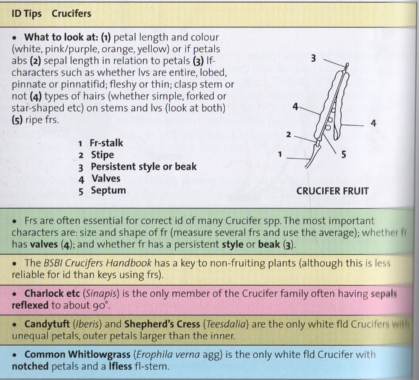
Four different groups are treated in this post: all or mainly with yellow flowers. To find more pictures of each plant, click on the links provided!
Group 1: yellow flowered Crucifers with jointed fruits
Brassica
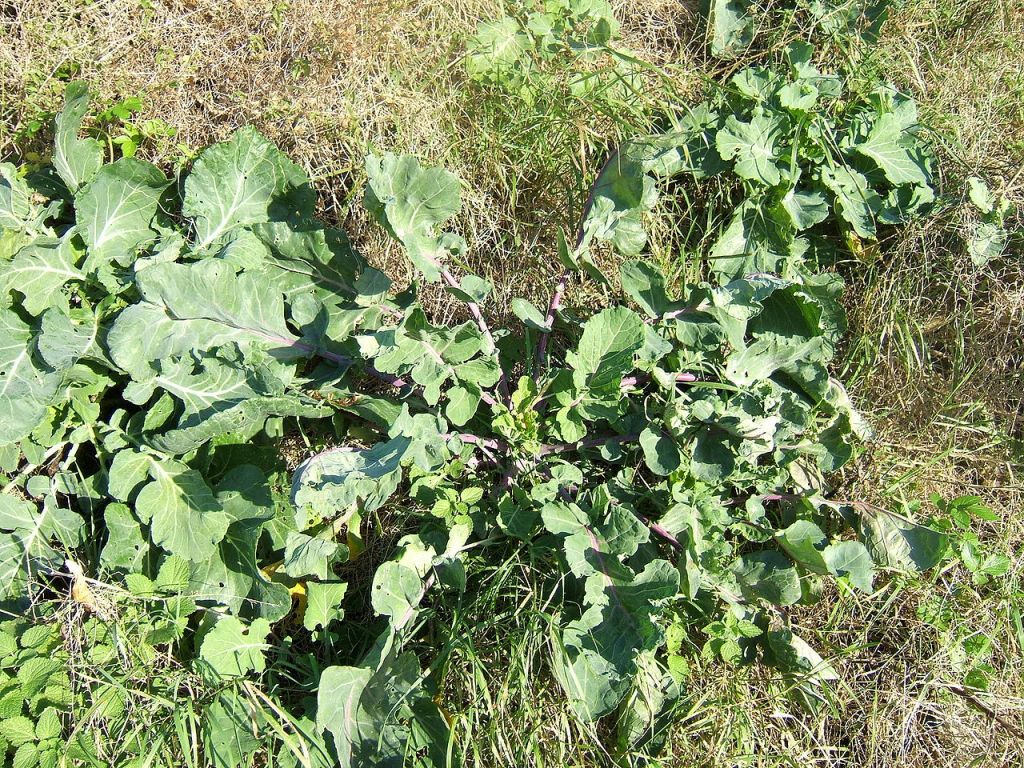
Brassica oleracea or Wild Cabbage
A winter-green biennial or perennial herb, found as an apparent native on sea-cliffs, predominantly on chalk and limestone but also on other base-rich substrates. It is most frequent on bare cliff edges, but also grows in maritime grassland and in quarries inland. Elsewhere it is an increasing casual escape, in all its cultivated forms, in waste places and on refuse tips and roadsides.
B. oleracea is the wild ancester of our cabbage and kale and was first recorded in Britain in 1548. On sea-cliffs it is impossible to distinguish native from alien populations and all are mapped as if they are native. These coastal plants are var. oleracea; other varieties and cultivars occur as casuals.
Leaves – raw or cooked. Slightly bitter raw, they can be cooked in one or more changes of water. We find that the slight bitterness actually enhances the flavour, and this is one of our favourite cooked leaves. (Ken Fern)
Found this very interesting blog by PFAF all about uses of Medicinal Plants.
- The leaves are cardiotonic and stomachic
- They have been used in the treatment of gout and rheumatism
- The leaves can be used as a poultice to cleanse infected wounds – the mid-rib is removed and the leaf ironed then placed on the affected area whilst still hot. The poultice should not be left on too long or it an cause blisters.
- The seeds are anthelmintic, diuretic, laxative and stomachic.
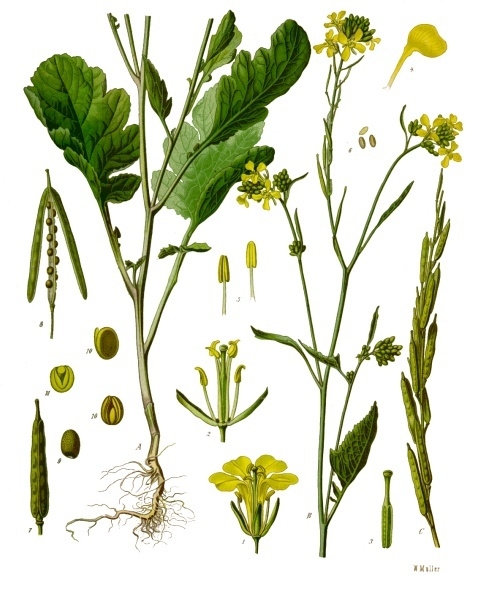
Brassica nigra or Black Mustard
An annual herb forming persistent populations by rivers, where it is a member of the tall-herb community in the flood zone, and on sea-cliffs and shingle. It was formerly cultivated on a field-scale for its seeds and it is also widespread as a casual on roadsides and waste ground, and can occur at the edge of arable fields.
Black mustard is thought to be the seed mentioned by Jesus in the Parable of the Mustard Seed.
Since the 1950s, black mustard has become less popular as compared to brown mustard, because some cultivars of brown mustard have seeds that can be mechanically harvested in a more efficient manner.
- A spice is generally made from ground seeds of the plant, with the seed coats removed.
- The seeds are commonly used in Indian cuisine,for example in curry, where it is known as rai.
- The seeds have a significant amount of fatty oil, mainly oleic acid. This oil is used often as cooking oil in India, it is called “sarson ka tel”.
- The young leaves, buds and flowers are edible. In Ethiopia, where the plant is cultivated as a vegetable in Gondar, Harar and Shewa, the shoots and leaves are consumed cooked and the seeds used as a spice.
In the UK, the plant was used to make “hot mustard baths”, which would aid people with colds. Ground seeds of the plant mixed with honey are widely used in eastern Europe as cough suppressant. In Eastern Canada, the use of mouche de moutarde to treat respiratory infections was popular before the advent of modern medicine. It consisted in mixing ground mustard seeds with flour and water, and creating a cataplasm with the paste. This poultice was put on the chest or the back and left until the person felt a stinging sensation. Mustard poultice could also be used to aid muscular pains.
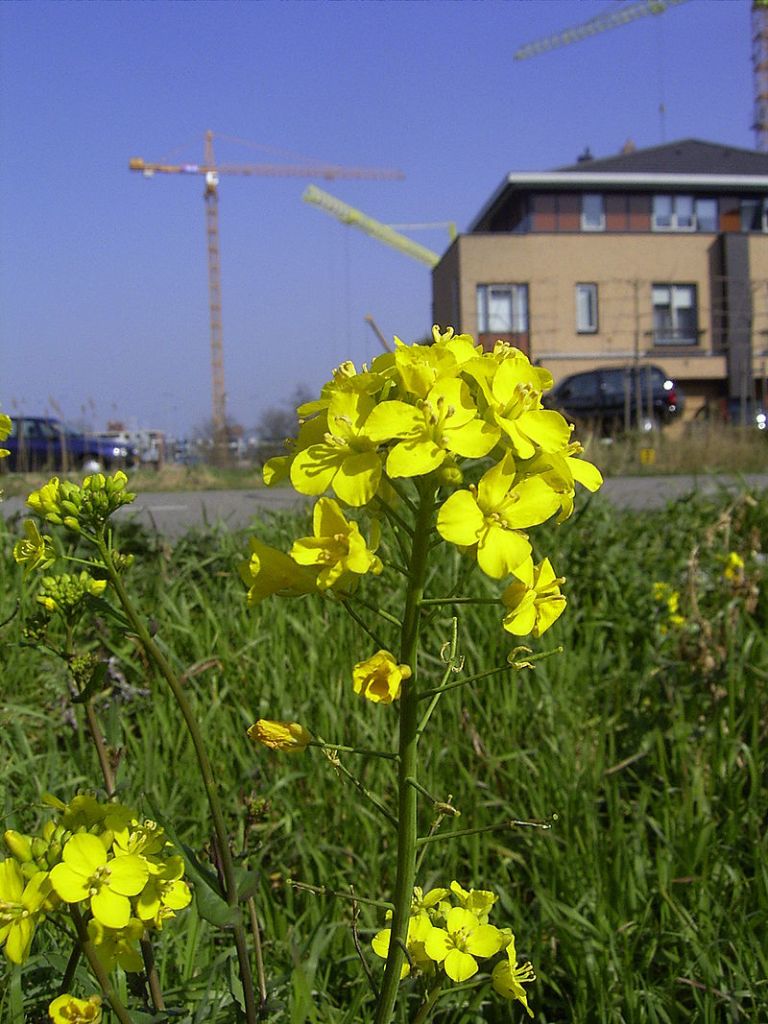
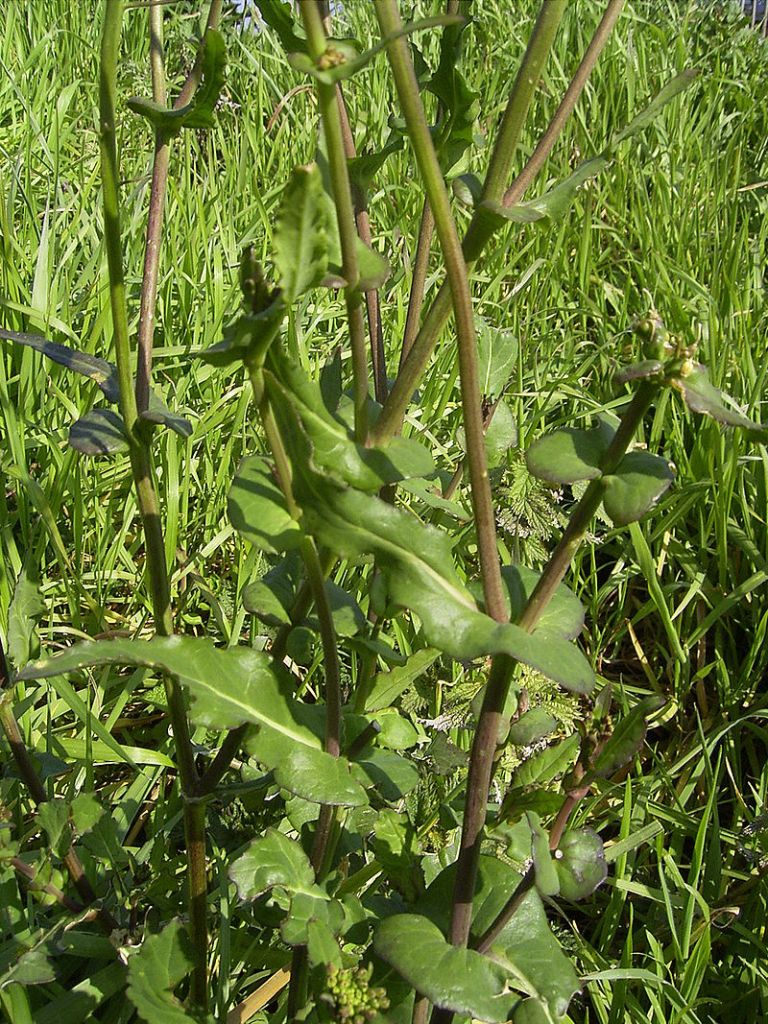
Brassica rapa or Turnip
An annual or biennial herb, found as long-established populations on river and canal banks, and as a casual on roadsides, in arable fields and on tips. An archaeophyte.
Subsp. campestris is the taxon found in semi-natural habitats. Two other subspecies are widely cultivated in Britain: subsp. oleifera is a bird-seed or oil-seed species; subsp. rapa (Turnip) is a frequent relic of cultivation.
The oil made from the seed is sometimes also called Canola Oil or Colza oil, The term rapeseed oil is a general term for oil from Brassica species that may not conform to Canola or Colza standards. Canola refers to three species of Brassica plants: Brassica rapa (Polish canola) is the less commonly grown, Brassica napus (Argentine canola), commonly grown in Canada and Brassica juncea (brown mustard) is a minor crop.
- Many butterflies, including the small white, feed from and pollinate the B. rapa flowers.
- The young leaves are considered an excellent leaf vegetable and can be eaten raw; older leaves are better cooked. The taproot and seeds can also be eaten raw, although the latter contains an oil which may cause irritation for some people.
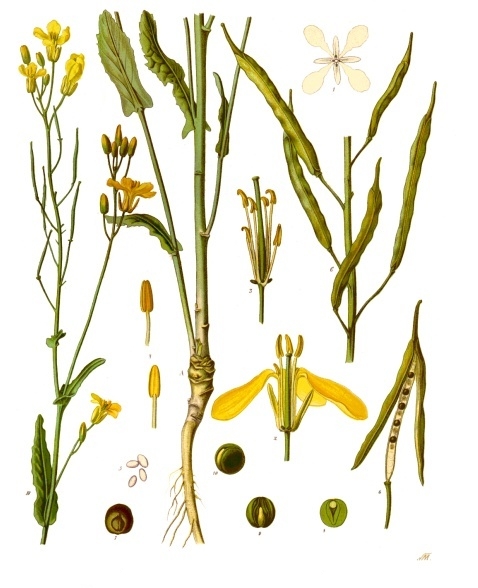
Brassica napus or Rape
An annual or biennial, rarely perennial, herb of disturbed ground on roadsides, waste and cultivated ground, rubbish tips and docks.
B. napus was first recorded in the wild in 1660. Two subspecies are widely cultivated in our area. The acreage of subsp. oleifera (Oil-seed Rape) has dramatically increased since 1980 and it is now widespread as a casual. Subsp. rapifera (Swede) is a rare relic of cultivation.
- Roasted canola seeds
- Rapeseed is grown for the production of animal feed, edible vegetable oils, and biodiesel. Rapeseed was the third-leading source of vegetable oil in the world in 2000, after soybean and palm oil.
- It is the world’s second-leading source of protein meal after soybean.
- Animal feed
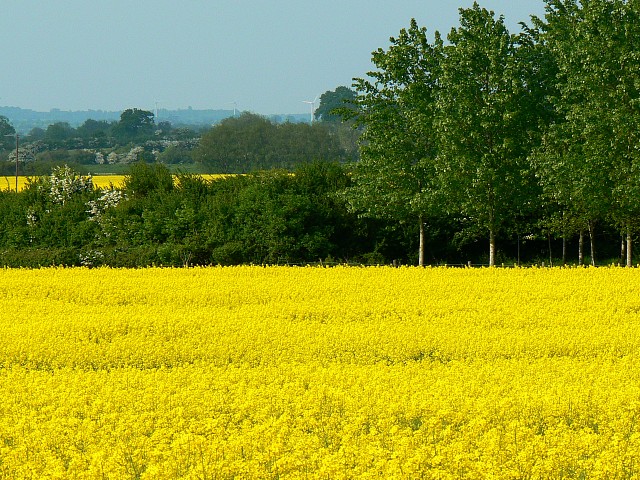
Processing of rapeseed for oil production produces rapeseed meal as a byproduct. The byproduct is a high-protein animal feed, competitive with soybean. The feed is employed mostly for cattle feeding, but is also used for pigs and poultry. However, natural rapeseed oil contains 50% erucic acid and high levels of glucosinolates that significantly lowers the nutritional value of rapeseed press cakes for animal feed.
- Vegetable oil
Rapeseed oil is one of the oldest known vegetable oils, but historically was used in limited quantities due to high levels of erucic acid, which is damaging to cardiac muscle of animals, and glucosinolates, which made it less nutritious in animal feed. Rapeseed oil can contain up to 54% erucic acid.
- Biodiesel
Rapeseed oil is used as diesel fuel, either as biodiesel, straight in heated fuel systems, or blended with petroleum distillates for powering motor vehicles.
- Rapeseed is also used as a cover crop in the US during the winter as it prevents soil erosion, produces large amounts of biomass, suppresses weeds and can improve soil tilth with its root system.
- Some cultivars of rapeseed are also used as annual forage and are ready for grazing livestock 80 to 90 days after planting.
- Rapeseed has a high melliferous potential and is a main forage crop for honeybees.
- As a biolubricant, rapeseed has possible uses for bio-medical applications (e.g., lubricants for artificial joints) and the use of personal lubricant for sexual purposes.
- Biolubricant containing 70% or more canola/rapeseed oil has replaced petroleum-based chainsaw oil in Austria although they are typically more expensive.
- Rapeseed meal is mostly used as a soil fertilizer rather than for animal feed in China.
- Rapeseed has been researched as a means of containing radionuclides that contaminated the soil after the Chernobyl disaster as it has a rate of uptake up to three times more than other grains, and only about 3 to 6% of the radionuclides go into the oilseeds.
Other Brassica species (neophytes) in the Plantatlas 2020:
- Brassica carinata or Ethiopian Rape
- Brassica elongata or Long-stalked Rape
- Brassica juncea or Chinese Mustard
- Brassica tournefortii or Pale Cabbage
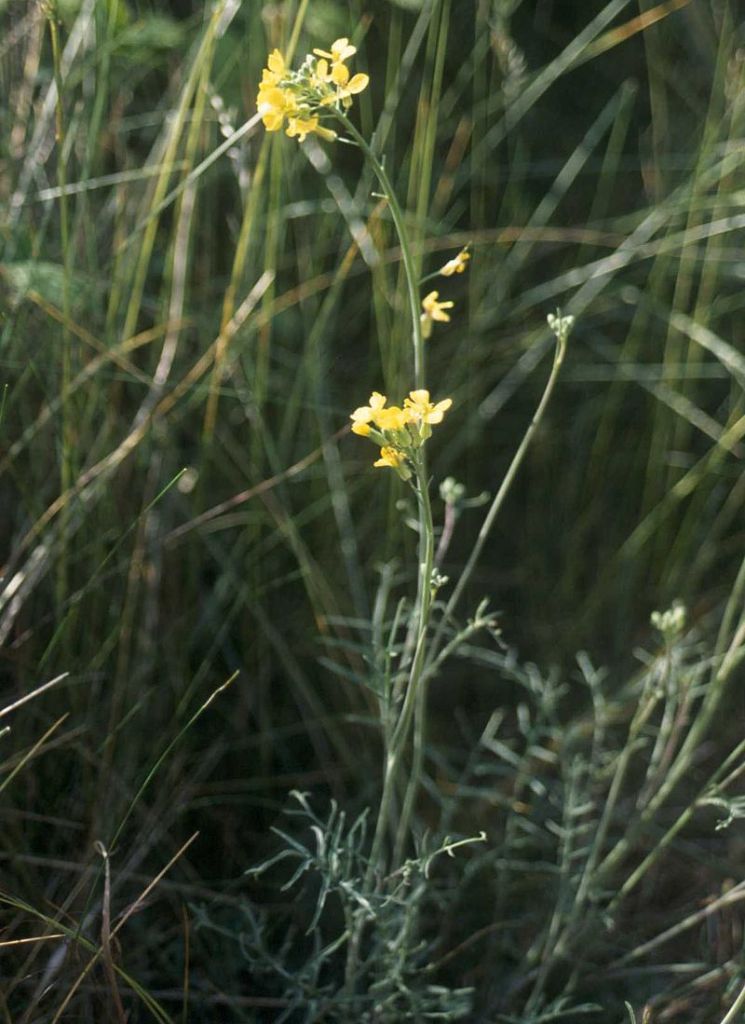
Coincya monensis ssp. monensis or Isle-of-Man Cabbage
An annual or short-lived perennial herb, mainly found by the sea on open dunes and on the strand-line, and only rarely in bare fields and hedge banks near the sea.
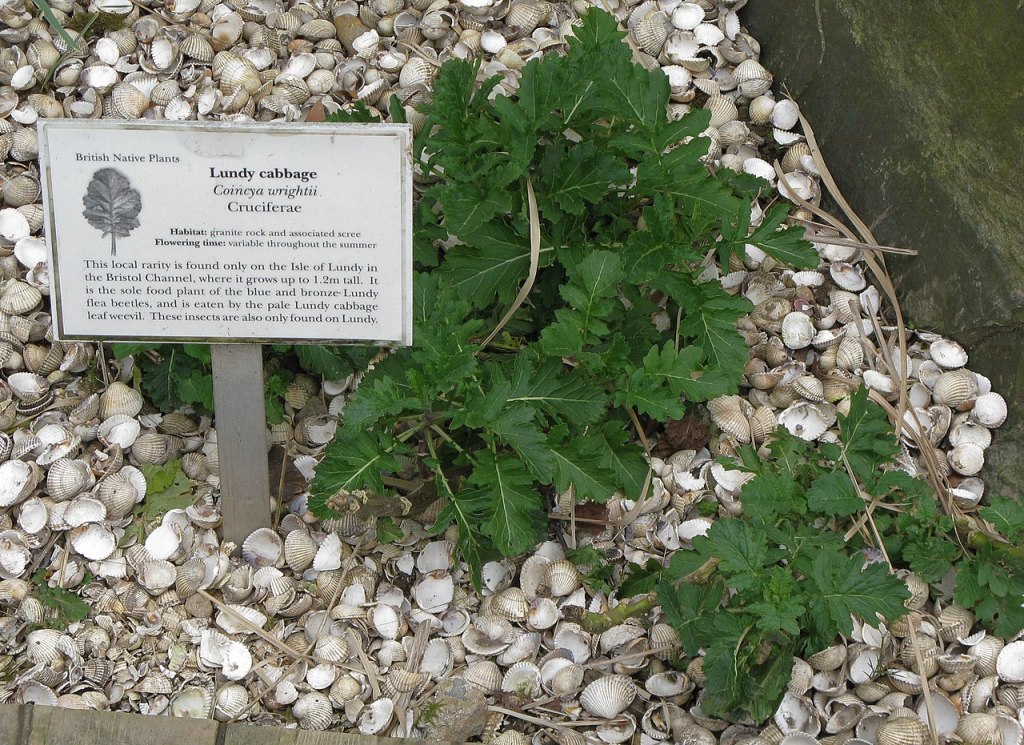
Coincya wrightii or Lundy Cabbage
A perennial, occasionally biennial, herb, mainly found in open communities on S.-facing cliffs. It will grow on flat ground on the tops of cliffs, but only where protected from grazing animals and shielded from invading shrubs. Recent evidence suggests that seed can be dispersed in sea water.
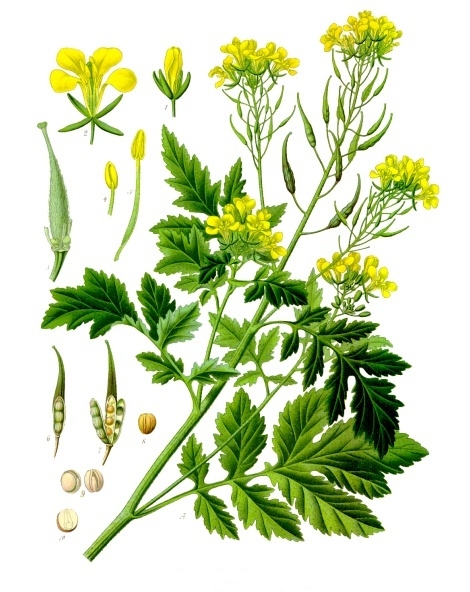
Sinapis alba subsp. dissecta or White Mustard
An annual herb, abundant as a persistent weed or a casual in arable fields, and on waste ground and roadsides, often on calcareous soils. An archaeophyte.
- Leaves – raw or cooked
- Seed – sprouted and eaten raw
- The seed can be ground into a powder and used as a food flavouring, it is the ‘white mustard’ of commerce.
Care should be exercised in using this remedy because the seed contains substances that are extremely irritant to the skin and mucous membranes
- In China it is used in the treatment of coughs with profuse phlegm such as tuberculosis and pleurisy
- The seed is seldom used internally as a medicine in the west.
- Externally it is usually made into mustard plasters (using the ground seed), poultices or added to the bath water.
- It is used in the treatment of respiratory infections, arthritic joints, chilblains and skin eruptions etc.
- At a ratio of 1:3, the seed has an inhibitory action on the growth of fungus
- The leaves are carminative.
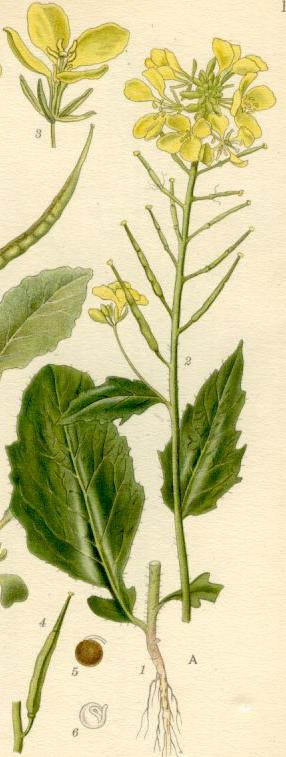
Sinapis arvensis or Charlock
An annual, (archaeophyte) abundant as a weed of cultivation and also found on roadsides, railways, tips and waste ground. It is now a frequent weed associated with roadworks.
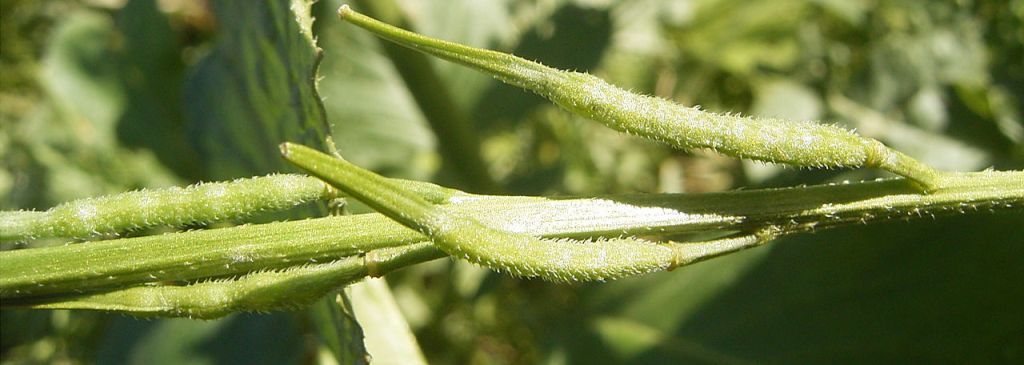
Edible and other Uses:
- The leaves of wild mustard are edible at the juvenile stage of the plant; they are usually boiled, such as in 18th century, in Dublin, where it was sold in the streets. During the Great Famine of Ireland, wild mustard was a common famine food, even though it often caused stomach upset.
- Once the seeds are ground, they produce a kind of mustard.
- A type of oil can be extracted from the seed which has been used for lubricating machinery.
Diplotaxis
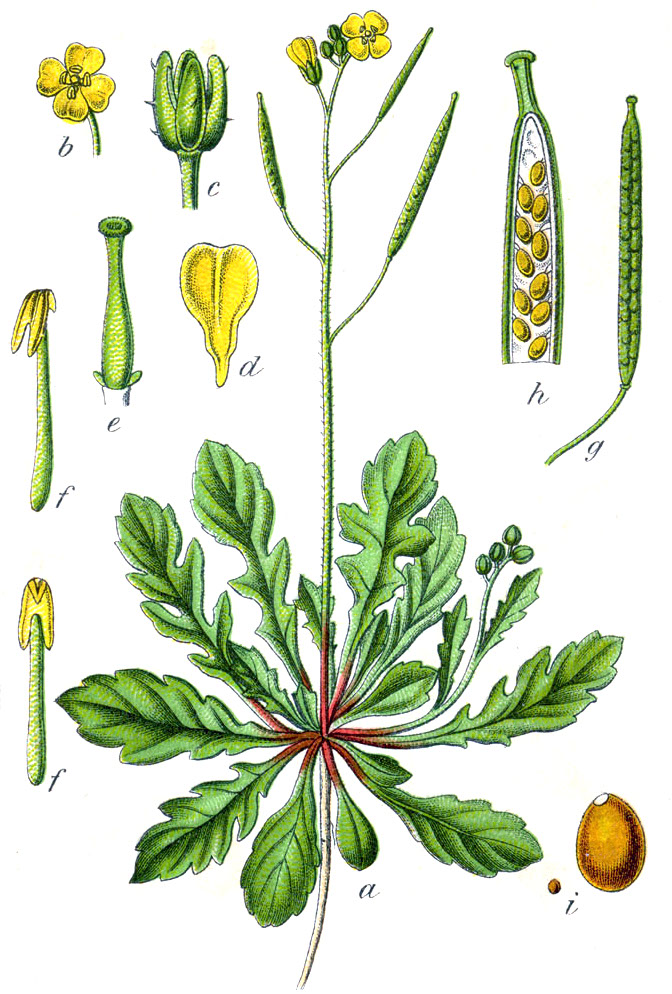
Diplotaxis muralis or Annual Wall-rocket
An annual or short-lived perennial herb found in a variety of dry, open habitats. It is most frequent in waste places such as by railways, roads and on tips, but is also found on rocks, cliffs, walls and in gardens. It is occasionally cultivated and ploughed in as a `green manure`. A neophyte.
The leaves can be finely chopped and added sparingly to salads or used as a flavouring for cooked dishes. A piquant flavour, somewhat resembling rocket, Eruca sativa, but with a sharp aftertaste.
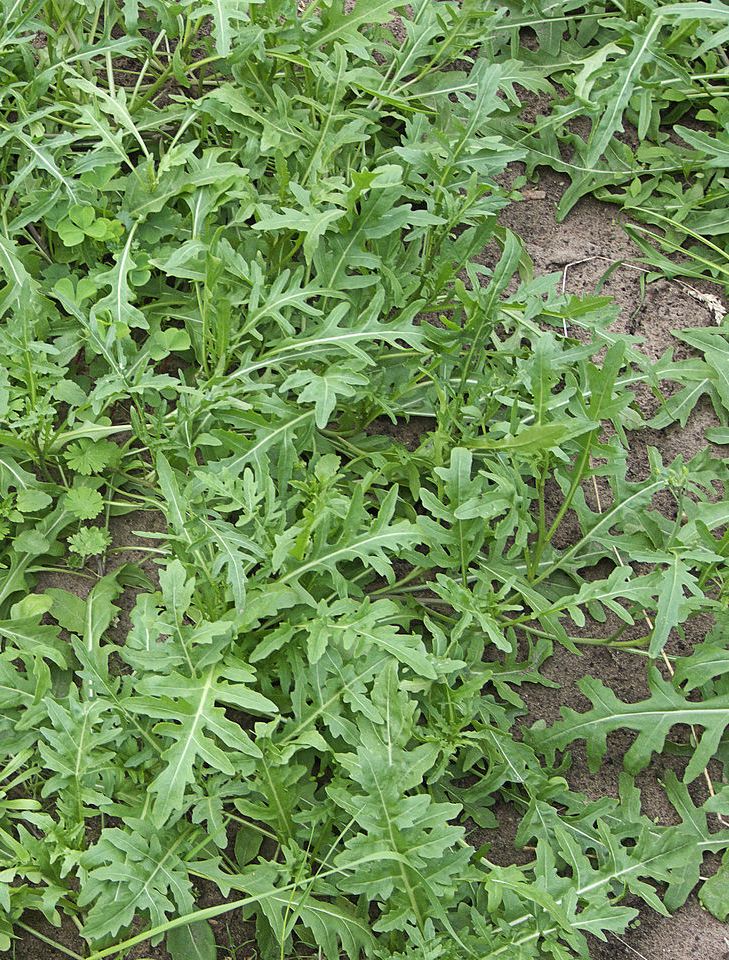
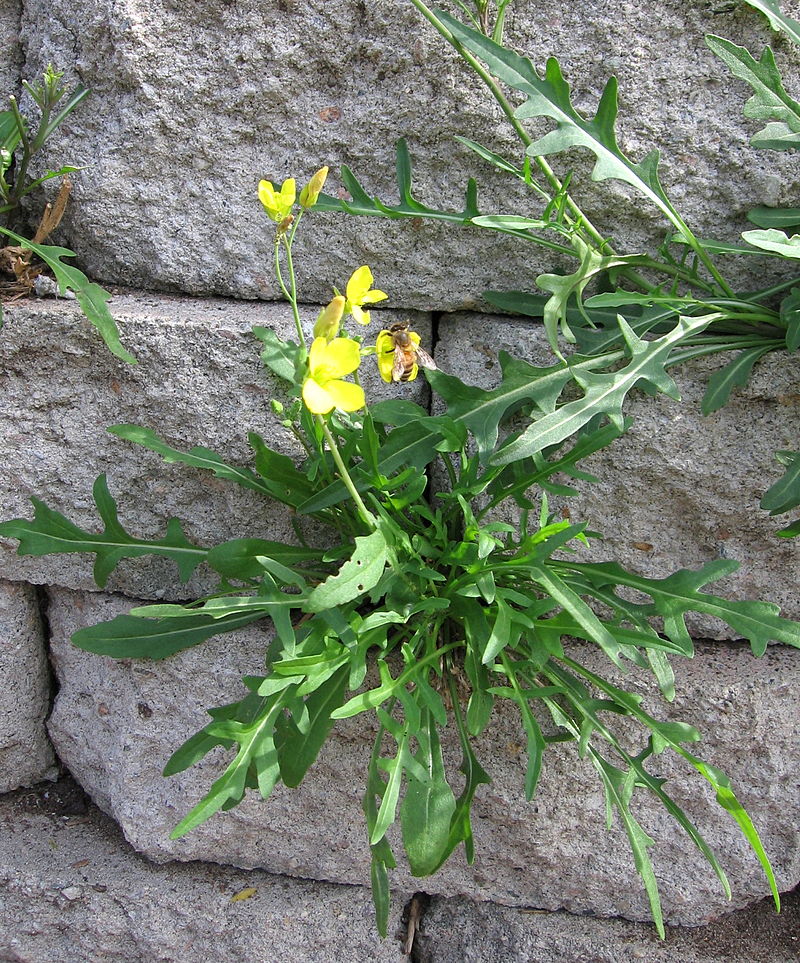
and wild in a wall on the right (by EricM) in Wikipedia.
Diplotaxis tenuifolia or Perennial Wall-rocket
A perennial herb, most common in warm, dry habitats, occurring in waste ground, on walls and banks, and in quarries and railway sidings. An archaeophyte in Britain and the Channel Islands and a neophyte in Ireland.
The leaves can be used in salads, they are very strongly flavoured of cress. The leaves have a hot flavour, very similar to rocket (Eruca vesicaria sativa) but more strongly flavoured – they make an excellent addition to a mixed salad but are too strong to be used in quantity on their own[K]. The plant is very productive, producing leaves from early spring until the autumn[K].
Sisymbrium
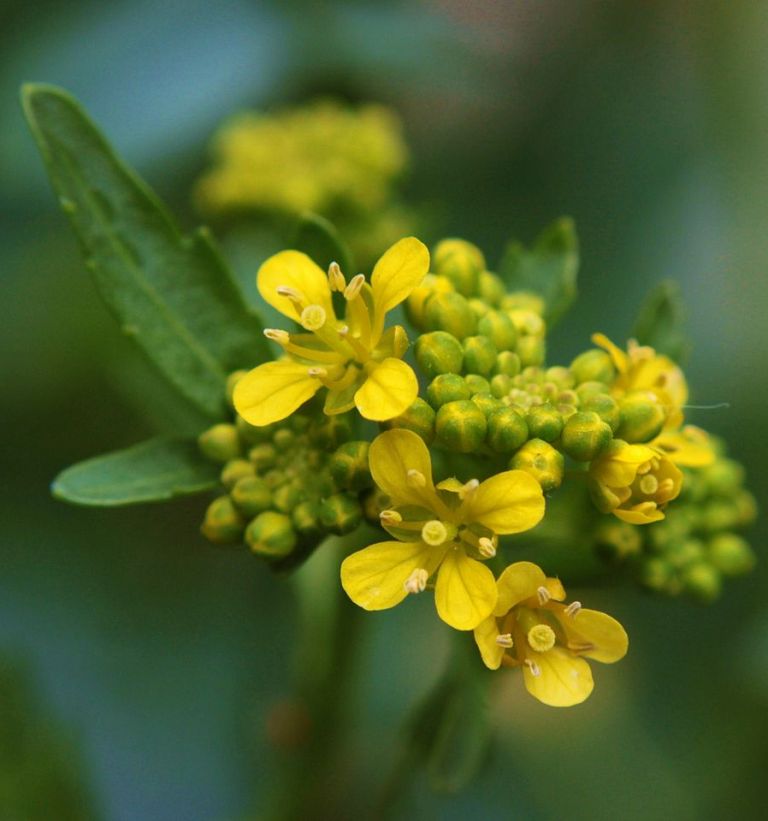
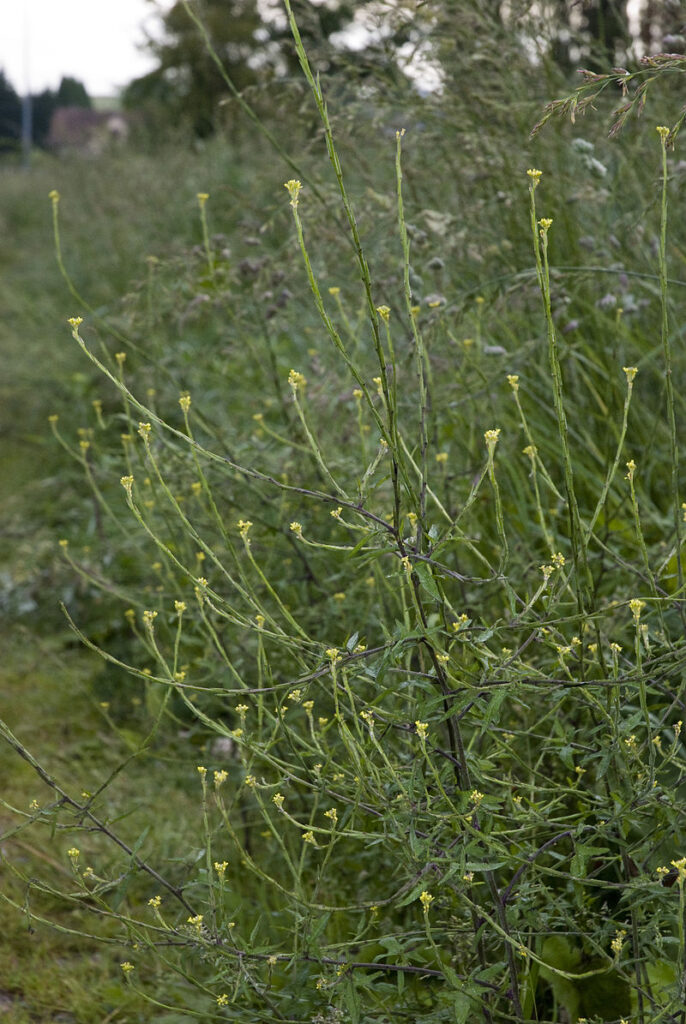
Sisymbrium officinale or Hedge Mustard
An annual or biennial herb of dry, neutral or base-rich soils, doing best in open situations and frequent in cultivated ground, on roadsides and waste ground. It is almost invariably associated with human activity, but it also occurs rarely in natural habitats such as riverbanks. An archaeophyte.
- Young shoots – raw or cooked. A bitter cabbage-like flavour, they are used as a flavouring in salads or cooked as a potherb.
- Seed – raw or cooked. It can be ground into a powder and used as a gruel or as a mustard-like flavouring in soups etc.
This plant was at one time known as the ‘singer’s plant’ because of its use in treating loss of the voice. A strong infusion of the whole plant has been used in the treatment of throat complaints. Excessive doses can affect the heart.
Alkaline secretions from the growing roots help to sweeten an acid soil.
Hirschfeldia incana or Hoary Mustard
An annual or short-lived perennial herb, increasingly naturalised in a variety of waste places such as by docks, railways and roadsides, and on tips. It is often associated with grain imports and bird-seed, and frequently occurs as a casual. It was formerly introduced with wool shoddy. A neophyte.
- The young plant is eaten with oil and lemon juice in parts of Greece.
- The leaves of young plants are eaten raw.
- Seeds – raw or cooked. They can be ground into powder then mixed with water and eaten.
More on Edible Uses by PFAF
Raphanus
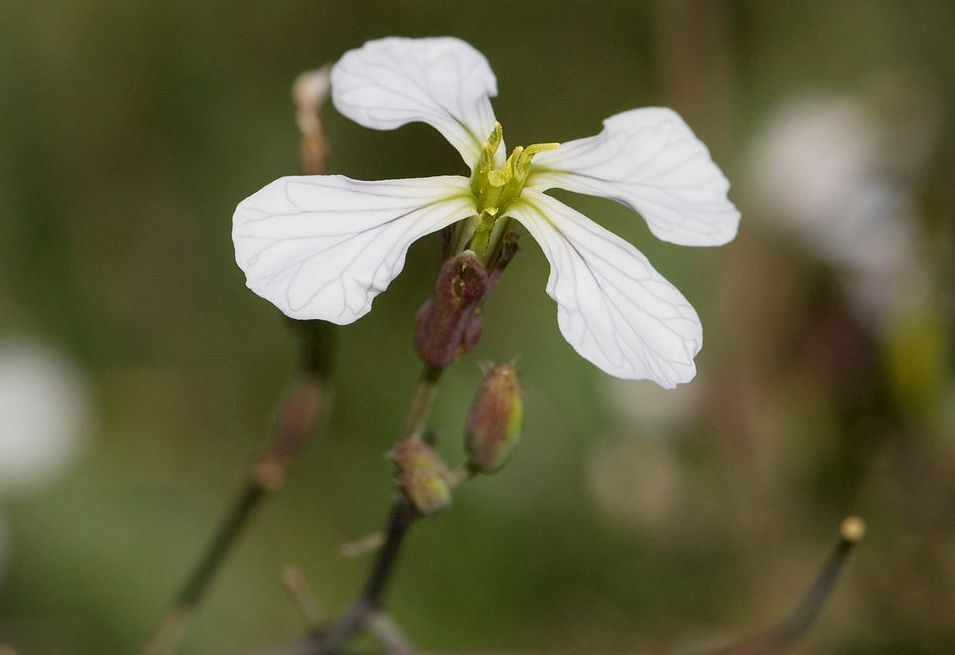
Raphanus raphanistrum subsp. raphanistrum or Wild Radish
An annual herb, found as a casual or persistent weed in cultivated fields and on disturbed track edges, roadsides and waste ground. Occasionally also planted in game cover crops. An archaeophyte.
Raphanus raphanistrum subsp. landra or Mediterranean Radish
An annual to perennial herb, occurring as a casual in waste places, where it arises as a grain contaminant. A neophyte in Britain.
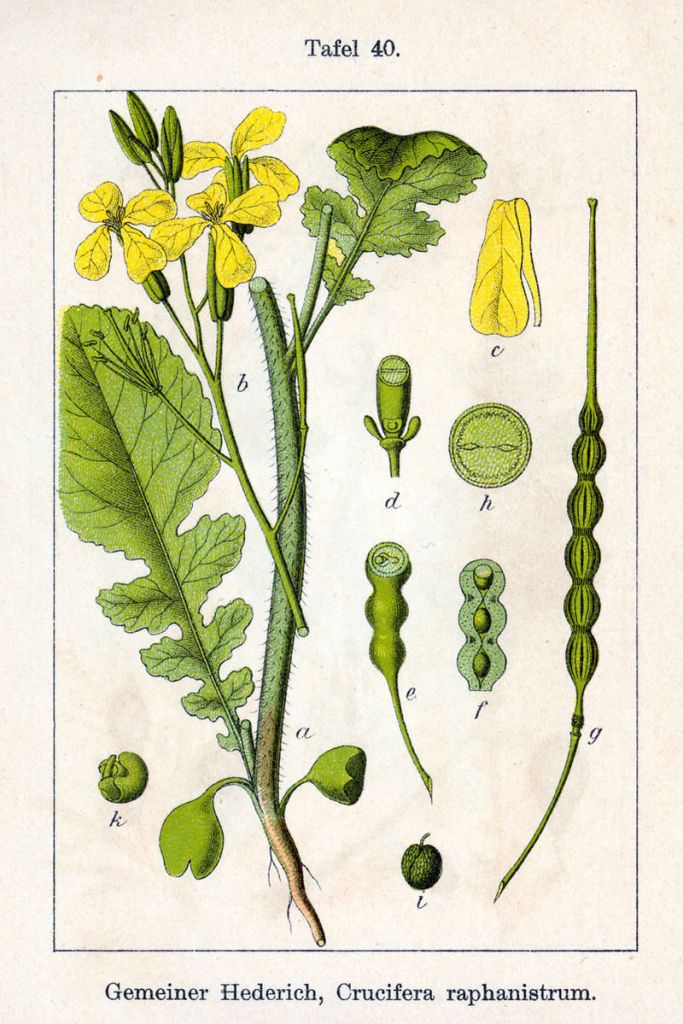
Raphanus raphanistrum subsp. maritimus or Sea Radish
A biennial or perennial herb of open coastal grassland, sand dunes, shingle, cliffs and disturbed ground by the sea. On parts of the east coast of Britain it grows on muddy shores.
All tender parts of the plant are edible. The leaves and flowers have a spicy taste or aftertaste. The seedpods can be eaten, as can the outer skin of the root (after being washed). It is said that John Walker cultivated sea radish root as an alternative to horseradish after discovering the plant on the west coast of Scotland as early as 1753.
Antirheumatic.
Group 2: yellow or orange flowered Crucifers with elongated fruits.
Barbarea
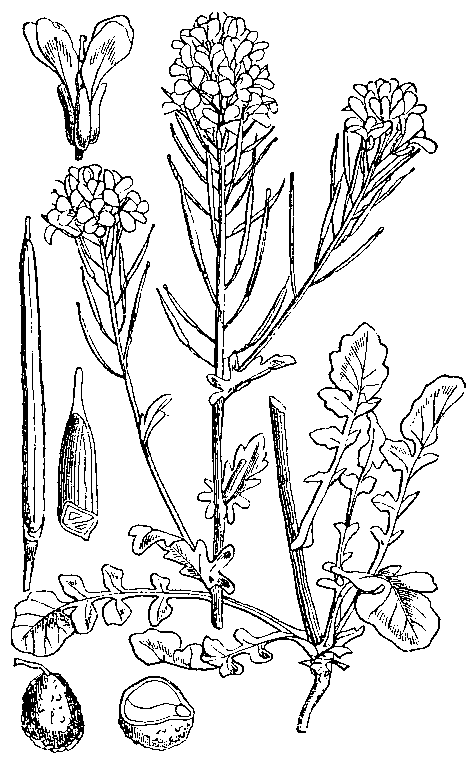
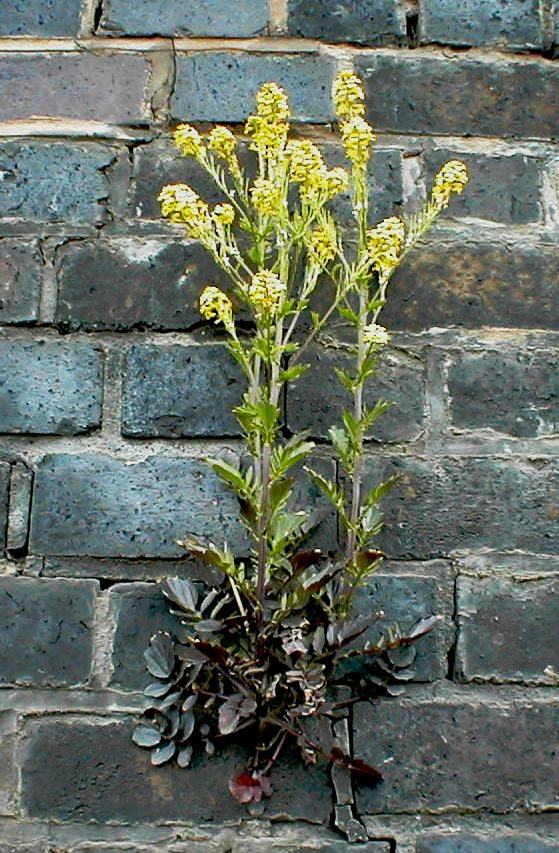
Barbarea vulgaris or Winter-cress
A biennial or perennial herb preferring a damp substrate, and thus widespread by rivers and streams, avoiding only the most acidic sites.
There is a report that ingestion of the leaves can lead to kidney malfunction!
Young leaves are chopped up finely and added to salads, older leaves can be used as a potherb but they are rather strong and are best cooked in one or two changes of water. The leaves are available all year round, even in the winter, especially if the weather is mild. To increase the productivity of the plants, remove the flowering stems as they appear (they can be eaten like the leaves[K]) and pick the outer leaves as the plant regrows. Some caution is advised, see the notes above on toxicity. Young flowering stems – harvested before the flowers open and cooked like broccoli.
The leaves are vulnerary and have been used as a poultice for treating wounds. A tea made from the leaves is appetizer, antiscorbutic and diuretic.
The three other species in the British Isles are:
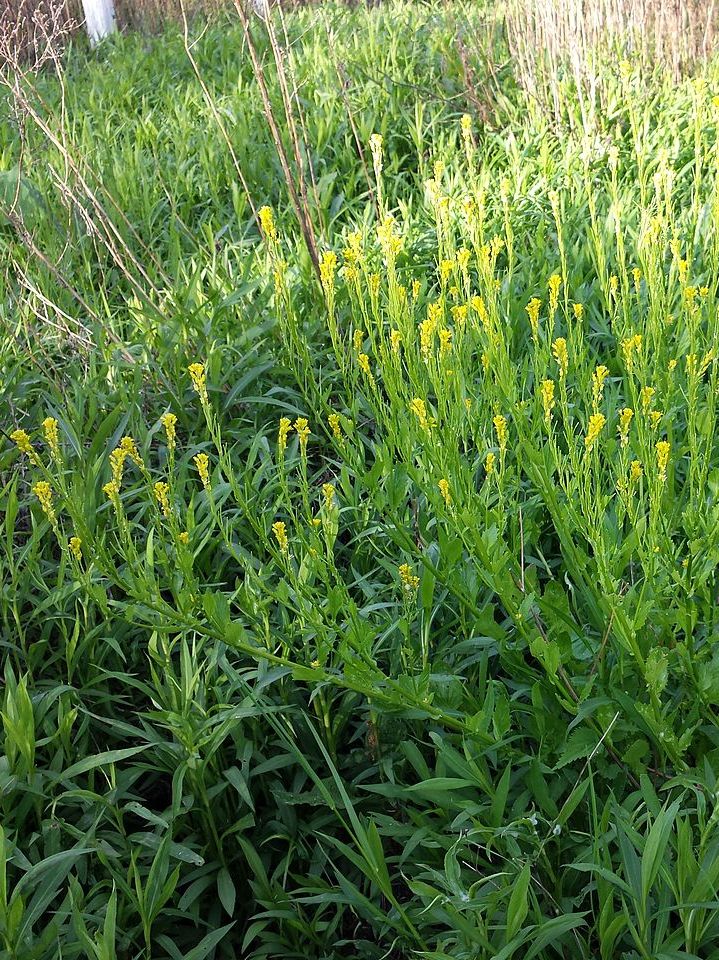

Barbara stricta or Small-flowered Winter-cress
This is a neophyte first recorded in 1843 and is a biennial or perennial herb of moist places by rivers, ditches, canals and marshes, and a rare casual of waste places.
Barbarea intermedia or Medium-flowered Winter-cress
A usually biennial herb, rarely perennial or annual, found in a variety of waste and disturbed places, although it was formerly most frequent as an arable weed. Usually only casual, but occasionally naturalized. A neophyte.
Barbarea verna or American Winter-cress
A biennial, or occasionally annual herb, sometimes cultivated as a salad vegetable (a winter substitute for watercress), found as a casual on waste ground, on pavements, soil heaps, track and road verges, and railways. It has a long-lived seed bank.
http://Erysimum
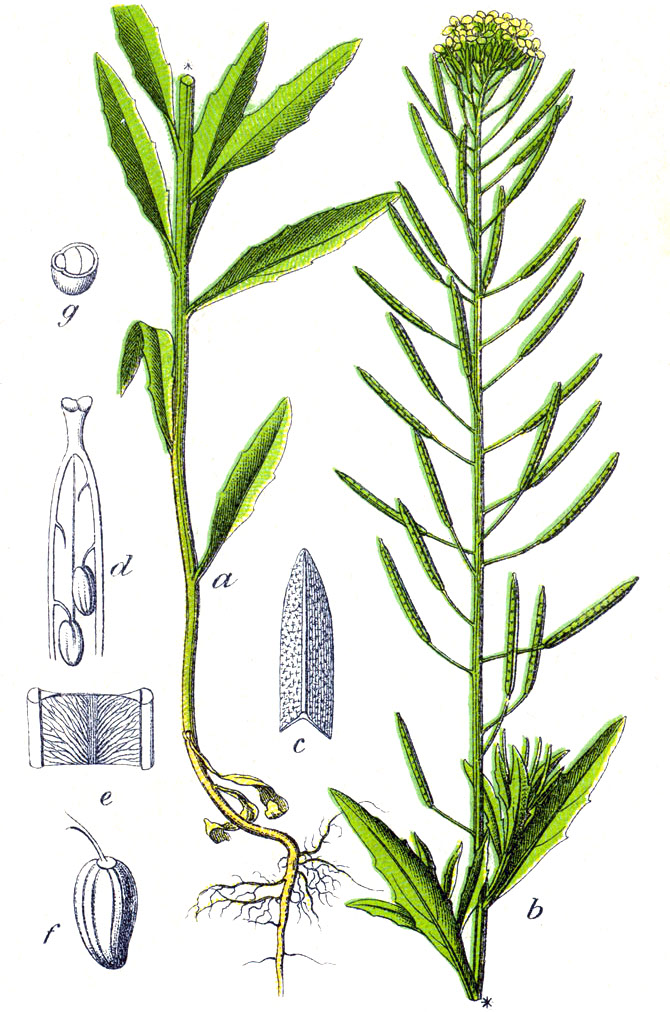
Erysimum cheiranthoides or Treacle-mustard
An annual, locally frequent in arable fields but common also as a weed of waste ground, roadsides and railways. It prefers sandy ground.
Cardiac glycosides, which are abundant in E. cheiranthoides, have been used for treating heart disease and other ailments in traditional and modern medicine. Has been used as an herbal remedy in traditional Chinese medicine. European herbalists in the 16th century, used the plant as a remedy for insect and animal bites. The common name wormseed wallflower comes from the use of E. cheiranthoides in treating intestinal worms.
Interesting info about Chemical Ecology can be read here in Wikipedia


Descurainia sophia or Flixweed
An annual, or rarely biennial, herb which is locally abundant as a weed in arable fields in light soils in E. England.
- The young leaves and shoots can be cooked or used as a potherb.
- Seed – raw or cooked is used as a mustard substitute.
- The seed can be ground into a powder, mixed with cornmeal and used to make bread, or as a thickening for soups etc.
- It can also be sprouted and added to salads etc.
- A nourishing and cooling beverage can be made by mixing the ground up seeds with water to make a thin batter.
- A poultice of the plant has been used to ease the pain of toothache.
- The juice of the plant has been used in the treatment of chronic coughs, hoarseness and ulcerated sore throats.
- A strong decoction of the plant has proved excellent in the treatment of asthma.
- It is also used in the treatment of worms and calculus complaints.
- The seeds have formed a special remedy for sciatica.
- A poultice of the ground up seeds has been used on burns and sores.
Sisymbrium
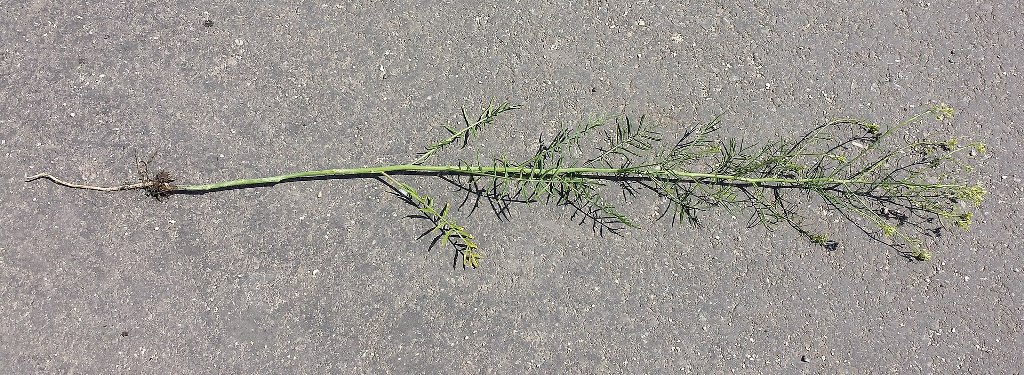
Sisymbrium altissimum or Tall Rocket
An annual which is frequently naturalised on rubbish tips and waste ground, and by roads and railways. It is a contaminant of bird-seed and grass-seed mixtures.
The leaves are spicy enough to make wasabi but can also be mixed into salads and other dishes.
The leaves and flowers are antiscorbutic and astringent.

Sisymbrium orientale or Eastern Rocket
An annual naturalised in rough ground and waste places, including railway land.
Other Sisymbrium spp (Neophytes) in Plant Atlas 2020:
- Sisymbrium erysimoides or French Rocket
- Sisymbrium irio or London-rocket
- Sisymbrium loeselii or False London-rocket
- Sisymbrium polyceratium or Horned Mustard
Group 3: yellow-cresses (Rorippa) with yellow flowers in erect racemes, petals very small compared with other yellow Crucifers.
Rorippa

Rorippa sylvestris or Creeping Yellow-cress
A perennial herb growing on damp bare ground, often in sites flooded in winter, on the margins and banks of rivers, streams, canals and ditches, by lakes and ponds and in depressions in pastures.
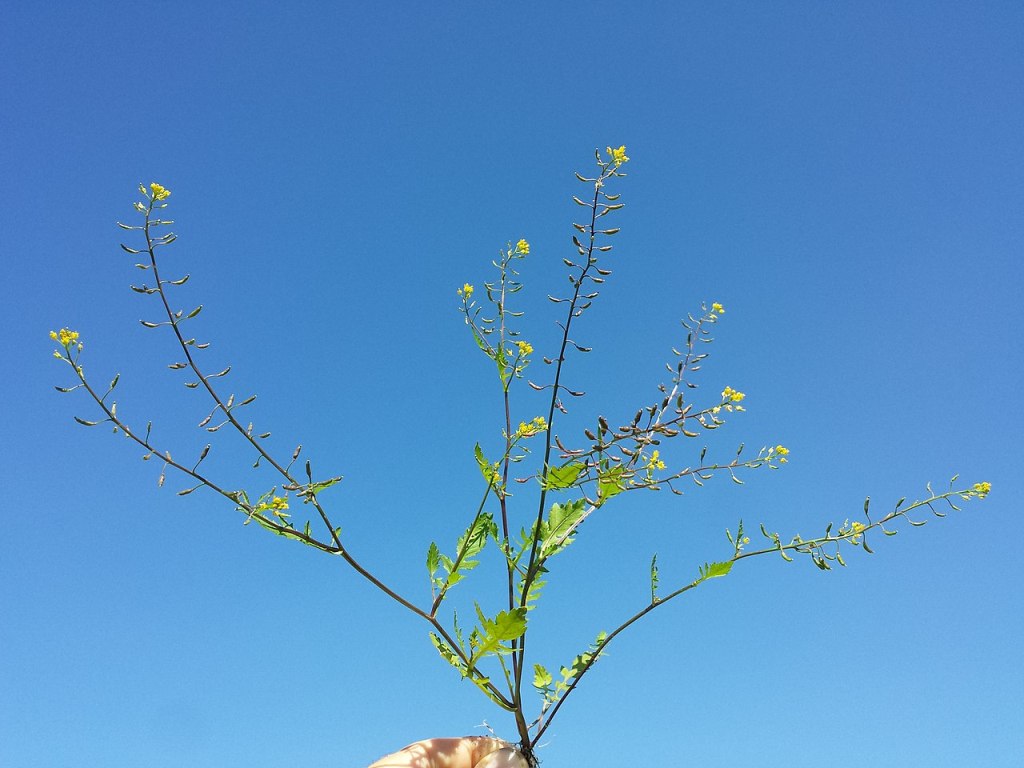
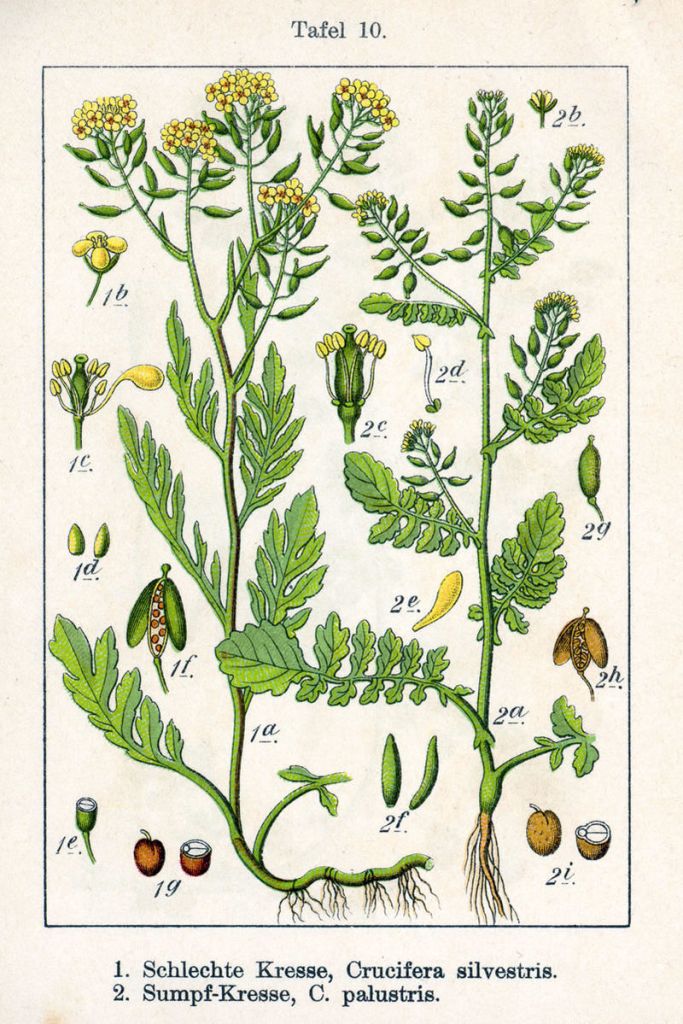
Johann Georg Sturm (Painter: Jacob Sturm) – Fig. from book Deutschlands Flora in Abbildungen. Wikipedia
Rorippa palustris or Marsh yellow-cress
A summer-annual, or rarely perennial, herb growing on river banks, on wet mud exposed above receding lake margins, and in ponds that dry out in summer.
Rorippa islandica or Northern Yellow-cress
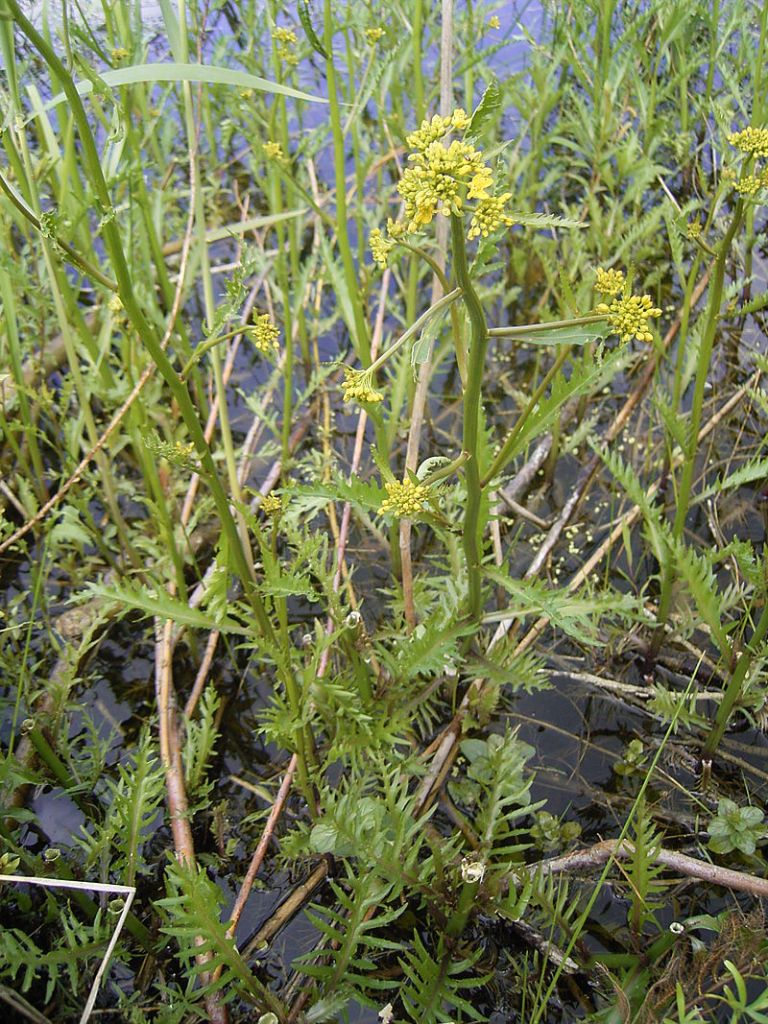
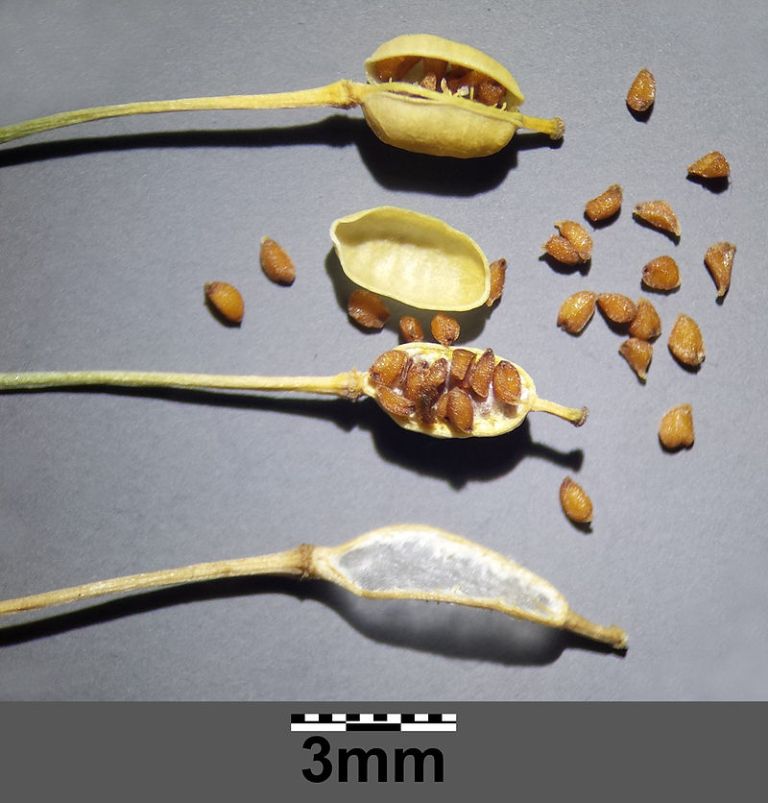
Rorippa amphibia or Great Yellow-cress
A perennial herb of emergent vegetation along the edges of streams and rivers, by lakes and ponds and in other swampy ground. It often grows in sites which are flooded in winter and where some water remains in the summer, and is usually found where the water is calcareous and eutrophic. Seed set is often poor, possibly because plants are highly self-incompatible, and spread is mainly by fragmentation of mature plants.
Young leaves and stems – raw or cooked. It has a hot cress-like flavour, they go well as a flavouring in salads[K].
R. × anceps (Rorippa amphibia × sylvestris) or Hybrid Yellow-cress
A fertile, perennial hybrid. In Britain, it is most frequently recorded on the banks of the larger rivers and by drains in washland which are flooded in winter; in Ireland there are records from both lake shores and riversides. It is sometimes present as large stands in these habitats.
and finally:
Rorippa austriaca or Austrian Yellow-cress


Turritis glabra (syn.) Arabis glabra) or Tower Mustard
A biennial, rarely perennial, herb of grassy places and on disturbed ground on free-draining sandy soils over chalk and limestone.
It is classified as an endangered species in the UK and is considered to be facing a very high risk of extinction in the wild. It is listed as a Priority Species under the UK Biodiversity Action Plan. Only 35 sites are recorded by Plantlife mostly in Norfolk, (where 100 plants were found at a new site in 1999) but includes 6 sites near Kidderminster in Worcestershire.
Young leaves – cooked. An infusion of the plant can be used as a beverage
An infusion of the plant has been used to check a cold when it first appears. An infusion of the plant has been used as a general preventative for sickness and is given to children when sickness is about.
Other Arabis spp. in Plant Atlas 2020: (more about those in part 3)
- Arabis alpina or Alpine Rock-cress
- Arabis caucasica or Garden Arabis
- Arabis collina or Rosy Cress
- Arabis hirsuta or Hairy Rock-cress
- Arabis procurrens or Prostrate Rock-cress
Wallflower
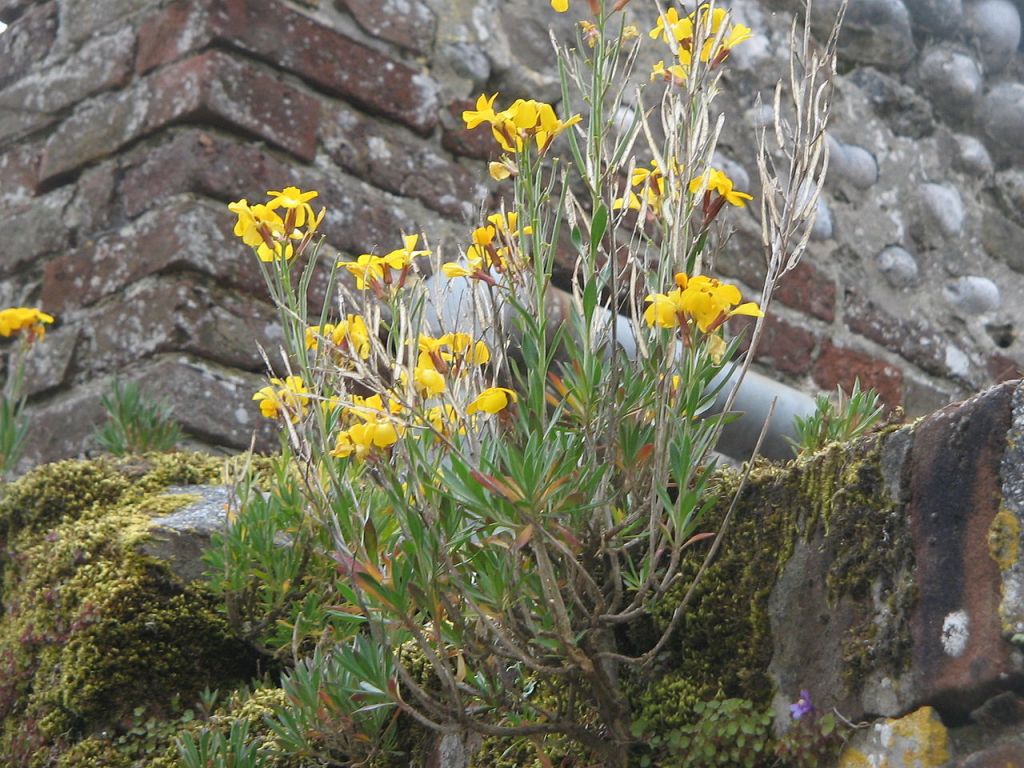
Erysimum cheiri or Wallflower
A perennial herb widely naturalised on cliffs, old walls and rocks, particularly on calcareous substrates where it is often very persistent. It tolerates poor, thin, dry soils, but a warm site is essential.
The wallflower is a garden refugee and originally native to south-east Europe, especially in the Mediterranean basin, where it grows in the wild in rock corridors. In Central Europe, it is now a wild and naturalized archaeophyte, which occurs mainly in warmer areas, but is only scattered for the time being.
It is a beautiful, fragrant, long-flowering, ornamental plant. Pollination by bumblebees.
Isatis

Isatis tinctoria or Woad
An archaeophyte and biennial or perennial herb, found only in ruderal habitats such as quarries, bare cliffs, arable fields, docks and waste places.
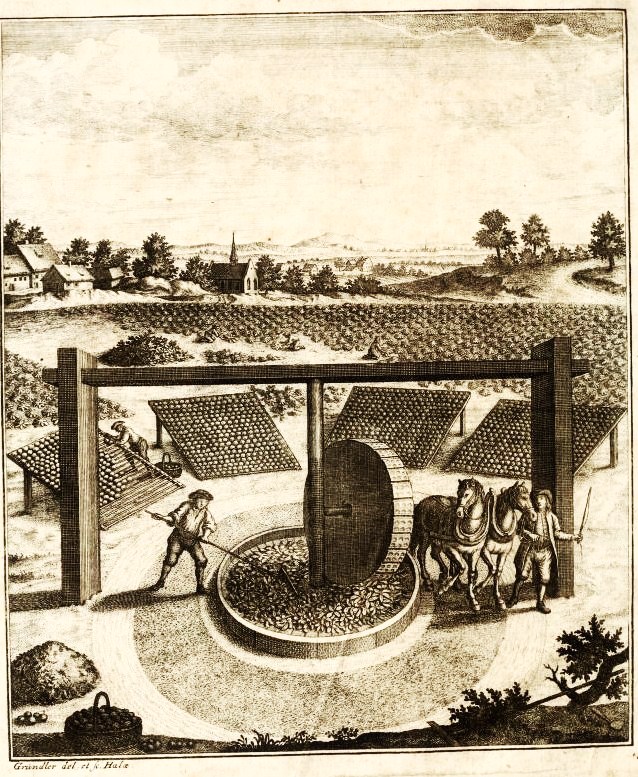
I. tinctoria has been used as a dye plant in Britain since the Iron Age. In the 1930s, however, the world`s last two woad mills, in Lincolnshire, were closed and since then it has been a rare casual.
Group 4: Yellow flowers and fruit not obviously composed of 2 parallel valves.
Rapistrum
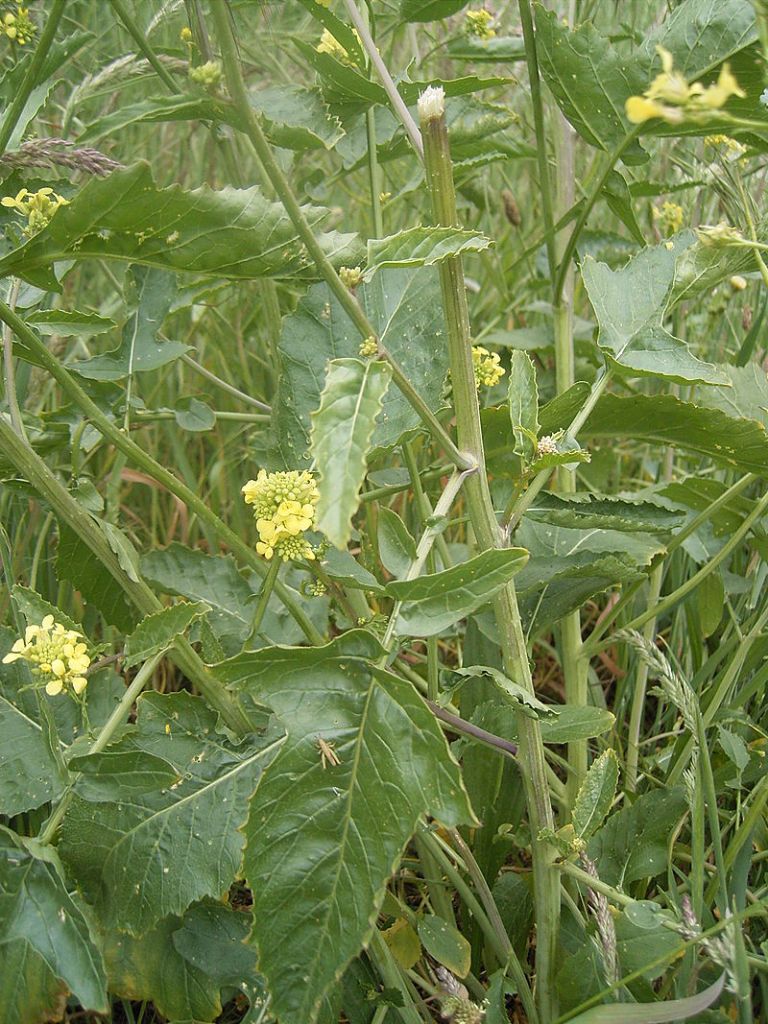
Rapistrum rugosum or Bastard Cabbage
An annual or short-lived perennial herb, found mainly as a casual of waste ground, but now becoming naturalised (it is a neophyte) in a variety of habitats where it is sometimes invasive, such as in open grassland. It is introduced with grain and bird-seed.
The fruit is different as all the others above. It has a knoblike spherical ribbed silique borne on a long pedicel with a widened area where it joins the fruit.
